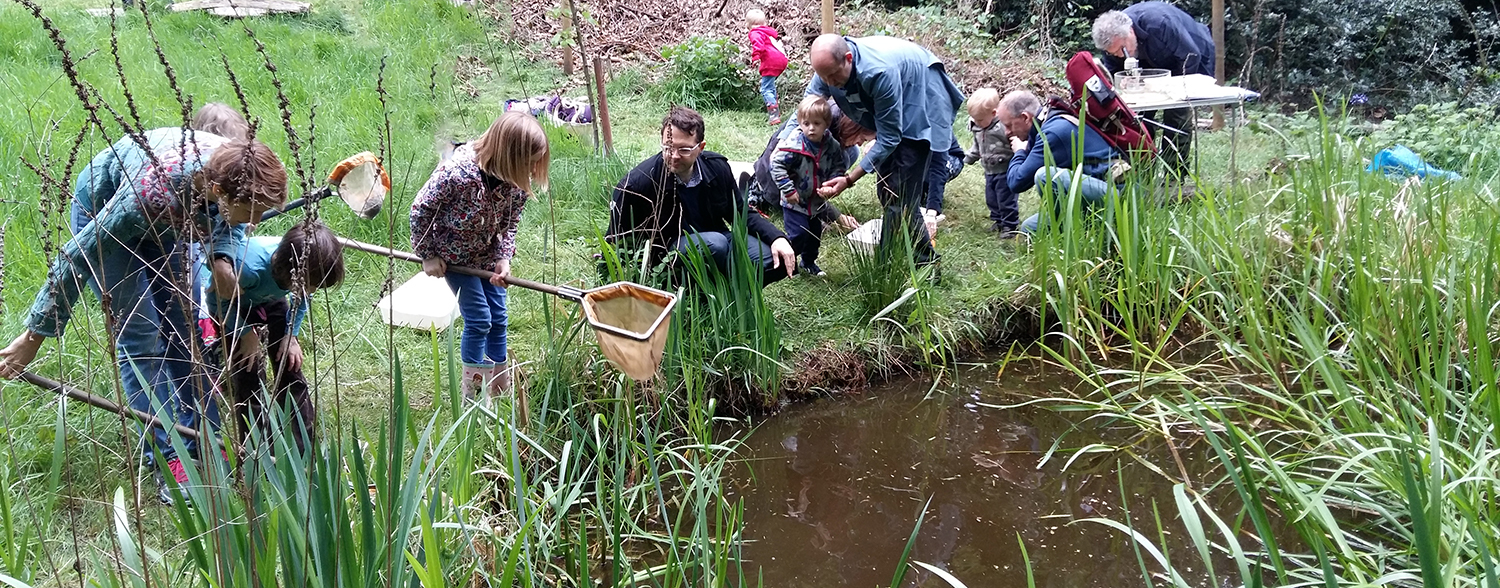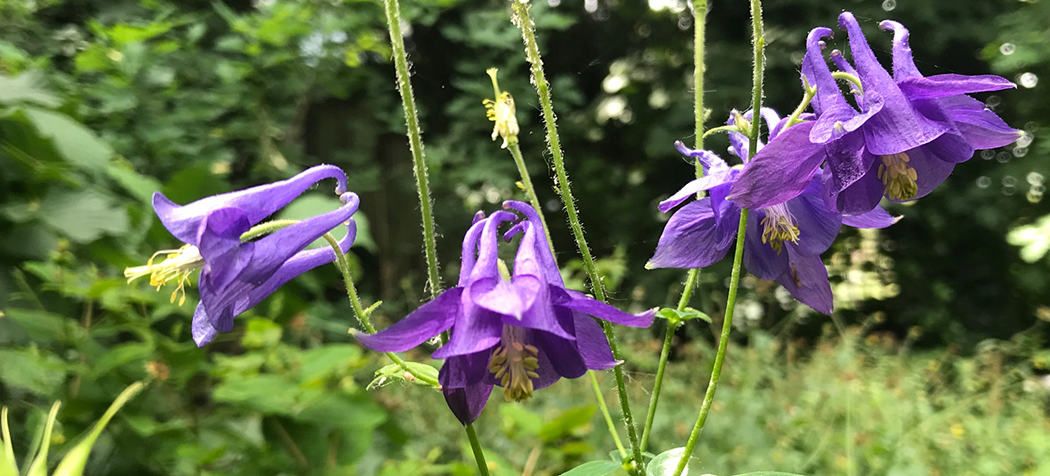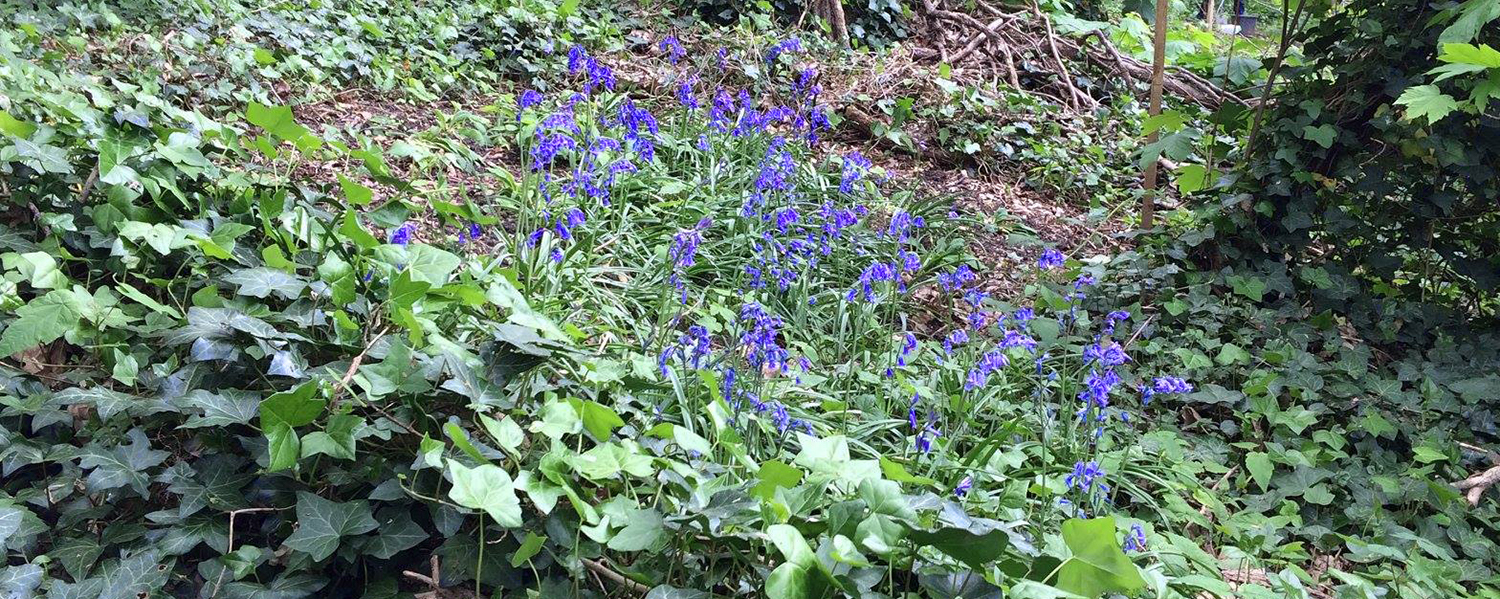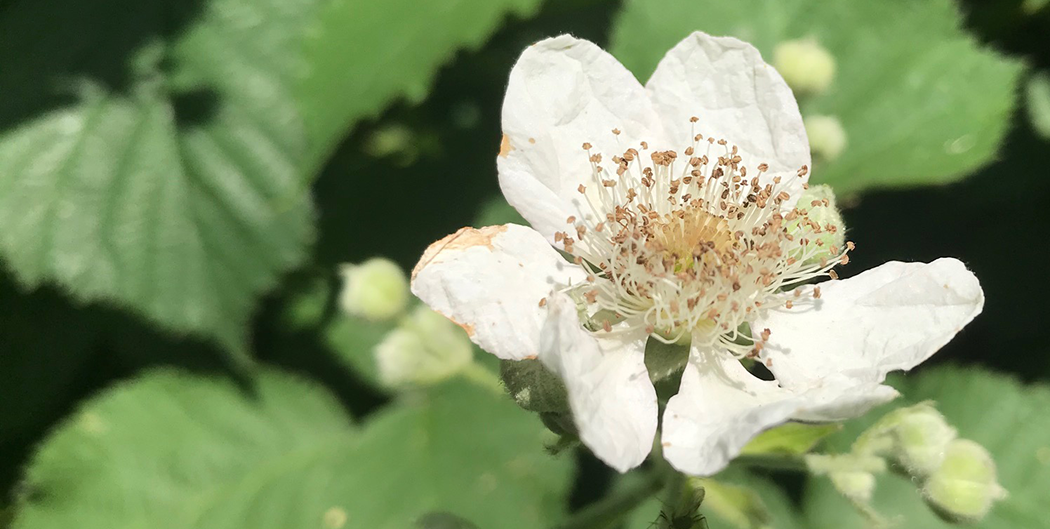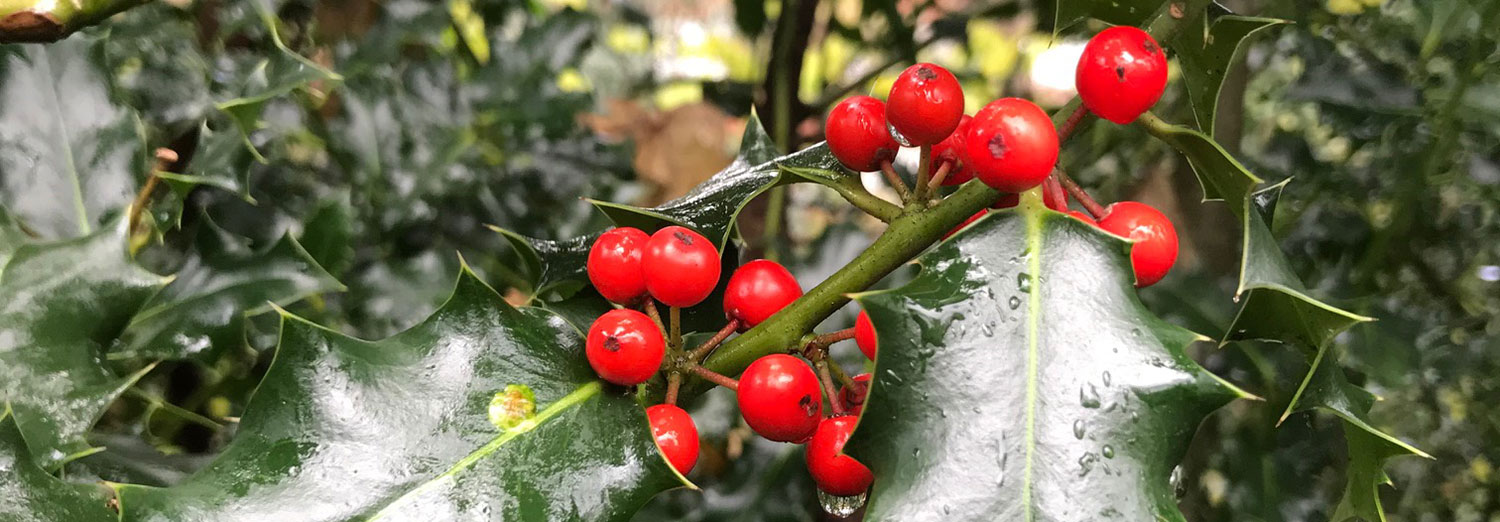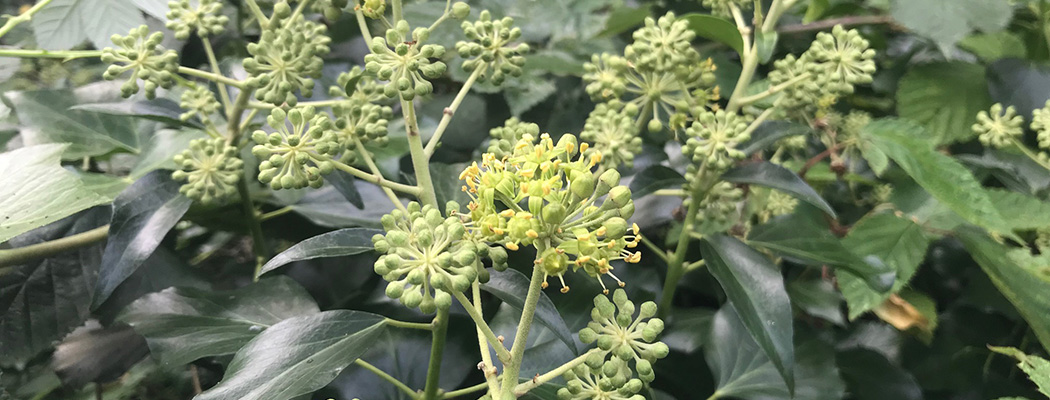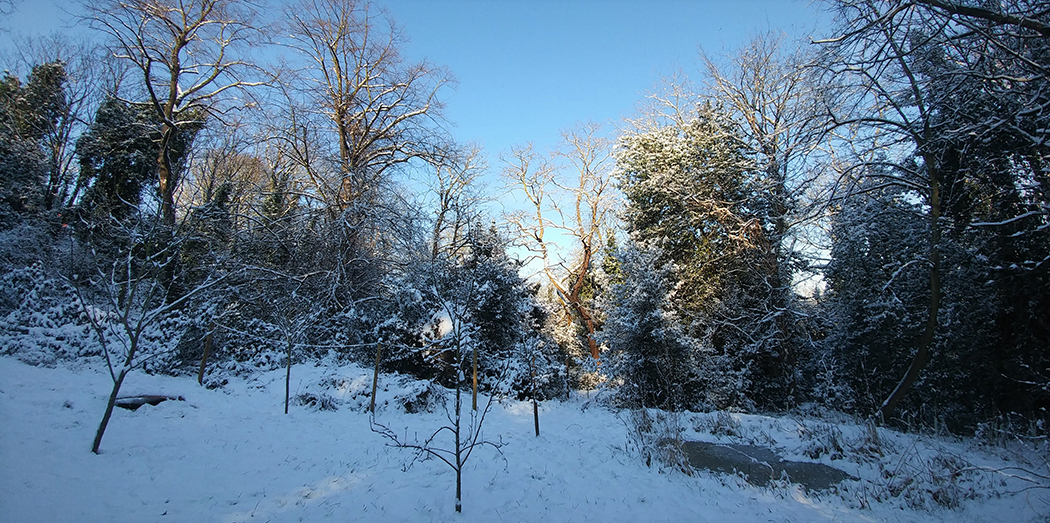In early June 2023 local botanist Jane Lawson re-visited Westcombe Woodlands as part of her follow up to her site visit several weeks ago. In this short space of time, more late Spring and early Summer flowers are in bloom, with more to follow! Jane’s list of plants that she observed is below, as well as some of the photos she took.
Ground elder Aegopdium podagraria; a patch forming hairless perennial of damp and disturbed ground.
Garlic mustard Sisymbrium alliaria (Jack-by-the-hedge); the leaves grow large in winter and they have a strong garlic smell. It is favoured by the Orange tip butterfly as a food source and is good to eat especially when young.
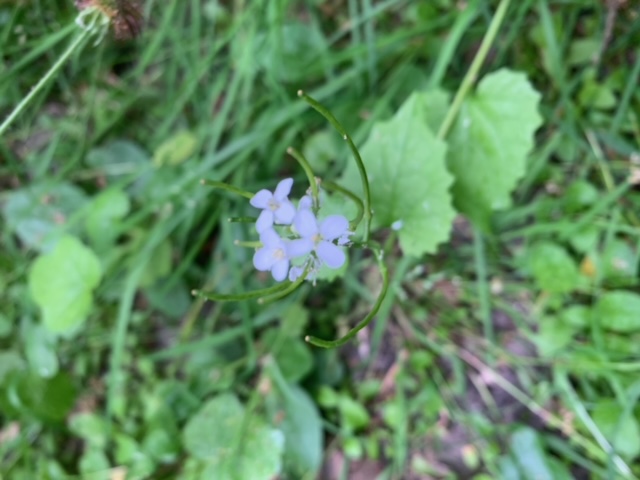
Wood avens Geum urbanum; a member of the rose family. It has a short creeping root stock. The name is from the Greek geuo in allusion to the clove like smell of the roots which were used to flavour Augsburg beer.
Green alkanet Pentaglottis sempervirens; leaves green throughout the year. Stamens deep inside the flower head.
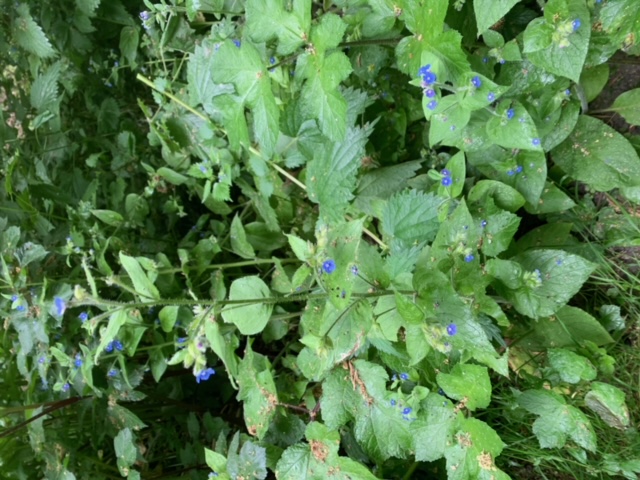
Hogweed Heracleum sphondylium. It can grow to six feet and is a splendid sight in hedgerows and commons. Not to be confused with an entirely different plant – Giant hogweed. It’s in flower from June to September. The dry hollow stem known as kecks is often a winter home for numerous small creatures such as insects or beetles or snails.
Enchanter’s nightshade. Circaea lutetiana found in damp woodland. The flower is tiny and all its parts are in twos. The genus is named after Circe the Enchantress but no one knows why.
Male fern nephrodiumfilix-mas;
Elm – a rare sight nowadays. Let’s hope it reaches maturity!
Elder Sambucus nigra; A quick grower and very common. The flowers can be used for elderflower cordial and the berries for wine. The juicy shoots harden quickly with a core of pith with can be extracted and then used as a pea shooter or even a music pipe.
Cocksfoot Dactylis glomerata; It has deep roots and survives well in drought.
Dogwood Cornus sanguinea; it was the wood from which dags (daggers) or goads and skewers were made – nothing to do with dogs.
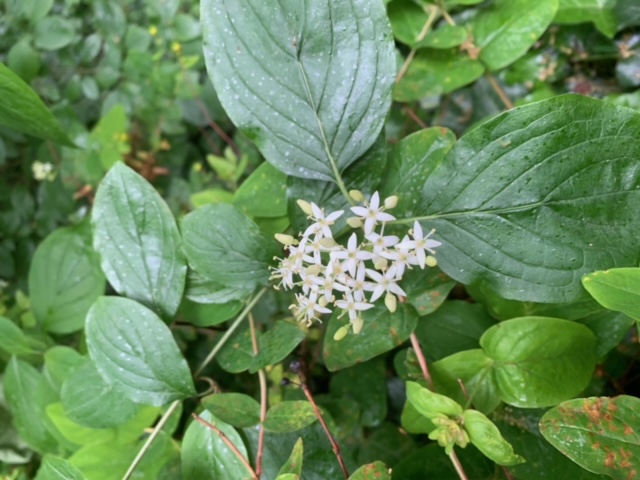
Red campion Silene dioica; attractive widespread and common. It can grow to three feet in height.
Cut leaf cranesbill Geranium dissectum; There are many cranesbills and this one to my mind is the most attractive with its notched bright red petals.
Common meadow grass Poa pratens; This is a very common plant.
Oxeye daisy. Lucanthemum vulgare; Very attractive which can grow to 31 inches tall in some habitats.
Dog rose Rosa canina; There is a multitude of species and it takes a DNA analysis to identify correctly each one. It’s common in hedges and ramble happily over other bushes and trees.
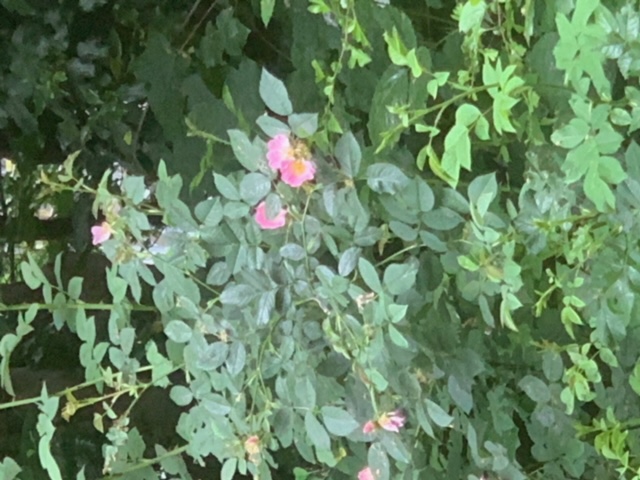
Yellow flag Iris pseudocorus; Grows in profusion on the banks of ponds ditches and rivers.
Marsh woundwort Stachys palustris; Flowers from June to August in damp places.
Meadow sweet Spiraea ulmaria; It has creamy white flowers and likes damp places. It has a powerful lovely fragrance and was used as a strewing herb in times past.
Tutsan Hypericum androsaemum; One of the St John’s Worts but doesn’t have that name. It’s semi evergreen and is found in shady places.
Hazel Corylus avellana; Mostly found as a shrub but if left alone it will develop into a tree. Hazel catkins appear in the spring with the female catkin having a fine red flower at the tip. The nuts are delicious – if the squirrels don’t get them first!

